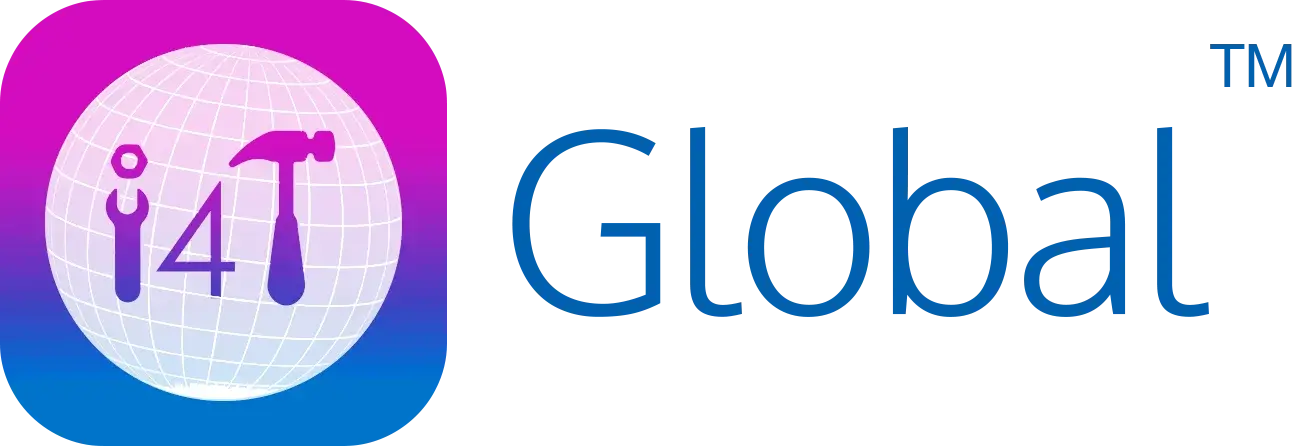The field service industry is growing day by day, and its competitiveness has increased significantly over the years.
Effective scheduling and dispatching can go a long way to satisfying customers, building long-term relationships with them, and beating the competition.
Statistics state that 90% of the customers will engage with a field service business based on its customer service.
That’s why you should execute scheduling and dispatching functions more efficiently and effectively. In this article, we will discuss the role of scheduling and dispatching and how it can help your field service business.
What is scheduling and dispatching
Let’s take a quick dive into what is scheduling and dispatching. Although they seem similar, both of these tasks serve a distinctive purpose.
Scheduling is about planning and organizing the resource allocation. This includes allocating field technicians, equipment, and appointments. Scheduling determines when and where the job will take place.
Dispatching comes after scheduling. It is the process of assigning specific jobs to field service technicians once scheduled. It involves selecting the right technician for the job, providing them with necessary information, and resources, and monitoring their progress. Dispatching ensures the right technician with the appropriate skills and equipment is sent for the job.
What are the critical components of effective scheduling

As you can see, effective scheduling is the backbone of successful field service management (FSM). You should know that there are several components for effective scheduling. Including all these components in your scheduling strategy will take your FSM business to the next level. Let’s take a look at these components one by one.
1. Prioritization
Prioritization is identifying and ranking tasks based on their urgency and importance. Some tasks can be more critical than others and require immediate attention. In these situations, you should ensure that time-sensitive jobs are addressed first. This will help to deal with time-critical matters effectively and improve customer satisfaction.
2. Resource allocation
Resource allocation is about assigning the right technician, equipment, and materials to a specific task. It ensures that the necessary resources are available and allocated efficiently. Proper resource allocation maximizes productivity, reduces downtime, and optimizes resource utilization. This would ultimately lead to cost savings and improved service quality.
3. Time management
This is about planning and creating schedules that will account for traveling time, task duration, and potential delays. It ensures that technicians have realistic schedules to follow.
Effective time management minimizes overbooking and prevents schedule conflicts. Further, it helps to accurately estimate when technicians will arrive at customer locations. This would improve punctuality and customer satisfaction.
4. Flexibility
Flexibility in scheduling helps to adjust to unforeseen circumstances, such as urgent service requests or changes in technician availability.
A flexible scheduling system can help to make last-minute changes without disrupting the entire schedule. This improves the adaptability and responsiveness to the client’s needs.
What are the best practices for effective dispatching
Scheduling and dispatching goes hand-in-hand. That’s why you should plan for effective dispatching when implementing a scheduling strategy for your FSM business.
Effective dispatching is a critical aspect of field service management that can significantly impact service quality and efficiency. Here are some best practices you can adopt when designing effective dispatching strategies:
1. Efficient routing
You should plan the most optimal paths for technicians to reach their destinations. This involves considering factors like traffic, distance, and task priorities. Well-planned routes reduce travel time, fuel costs, and vehicle wear and tear. It also enables technicians to complete more appointments in a day, increasing overall productivity.
2. Emergency responses
When you are dealing with emergency service requests, prioritization is the key. Quick response times can be critical for resolving urgent issues like equipment failures or safety hazards. Establishing a clear protocol for handling emergency requests will ensure that they receive immediate attention. Further, it ensures that the right technician is dispatched promptly to address the issue.
3. Communication
Effective communication with technicians is crucial. You must provide technicians with clear instructions, task details, and any details of the requests made by the customer. Good communication will minimize confusion and ensure technicians are well-prepared for their assignments.
4. Utilizing technology
Leveraging field service management software and tools like i4T Business can help you streamline the dispatching processes. These solutions will offer features like real-time tracking, and automated task assignments.
This enhances dispatching efficiency, reduces manual errors, and provides valuable data to improve scheduling and resource allocation.
5. Feedback and evaluation
You can easily identify areas for improvement by regularly reviewing dispatching performance and seeking feedback from technicians. This helps to fine-tune the dispatching process and enhance its efficiency, leading to better service outcomes.
6. Optimize workload
Balancing workloads among technicians is essential. This will prevent overburdening some while underutilizing others. Proper workload management will ensure technicians can complete their tasks effectively, maintain a healthy work-life balance, and consistently deliver high-quality service.
As you can see, these best practices will improve the efficiency and effectiveness of your dispatching process. Therefore, make sure to include them when designing the dispatching strategy for your FSM business.
What is the role of technology in effective scheduling and dispatching
Technology has evolved over the past years, revolutionizing the modern field service management industry. Here’s how technology has affected the scheduling and dispatching functions of field service businesses.
1. Software solutions
Popular field service management tools like i4T Business are transforming how businesses handle scheduling and dispatching. Here’s how FSM software would help you to do scheduling and dispatching:
- Know where everyone is: FSM software keeps track of your technicians in real-time with GPS technology. So, you always know where they are and can send the closest one to a job, which will help you to save time and fuel.
- Smarter schedules: It determines the best order for your technicians’ appointments. It’s like planning the fastest route not just for a road trip but for your workday. That means fewer zigzags and more jobs done.
- Less paperwork: The software will take away messy paper schedules or manual job assignments. It automates all the boring stuff, like matching the right technician with the right job.
- Keeps customers happy: The FSM software will tell your customers when your technician will arrive and send them reminders accordingly. Customers love that because they don’t have to wait around all day wondering when someone will show up.
2. Mobile accessibility
Mobile technology is crucial in today’s busy business world. It will be more beneficial for you and your technicians if you use FSM software with mobile accessibility. Here’s how:
- Quick access from anywhere: With mobile access, you can check the schedules and dispatch jobs from anywhere, like a coffee shop or even your sofa. You don’t need to be tied to a computer at the office.
- Real-time updates: Imagine you’re a technician out in the field. Mobile access lets you see your schedule on your phone and get updates instantly. So, you’ll know immediately if there’s a last-minute change or a new job.
- Map directions: Mobile applications often come with maps and GPS. So, when you’re on your way to a job, you can get directions from your phone. It’s like having a personal navigator.
- Customer communication: If you’re running late or must let a customer know you’re on your way, mobile access makes it easy. It allows you to send messages or updates without making a phone call.
3. Predictive analytics
Predictive analytics leverage historical data and algorithms to forecast service demands and optimize scheduling. By analyzing past service patterns, you can allocate resources proactively, reduce response times, and minimize disruptions to operations.
4. Artificial intelligence (AI)
AI-driven algorithms are becoming integral to scheduling and dispatching processes as they will optimize route planning and resource allocation. It can adapt to changing conditions, continuously adjust schedules, and make real-time decisions. AI will enhance decision-making by providing actionable insights from vast amounts of data.
How to overcome challenges in scheduling and dispatching

In addition to leveraging technology, field service organizations face various operational challenges in scheduling and dispatching. Here are some strategies for addressing these challenges:
1. Balancing technician workloads
Uneven task distribution can lead to overworked technicians or underutilized resources.
You should implement a workload balancing mechanism within your scheduling software to evenly distribute jobs among technicians. This should take into consideration factors like the technician’s skills, location, and availability. You should regularly review their workloads and allocate jobs to ensure a fair distribution.
2. Handling last-minute changes
Unforeseen disruptions, such as urgent service requests or technician unavailability, can disrupt the entire schedule.
You should develop contingency plans for last-minute changes and maintain a list of backup technicians who can step in when needed. Further, you should utilize real-time communication channels to swiftly reassign tasks or adjust schedules without causing significant disruptions.
3. Managing customer expectations
Customers expect punctuality and transparency regarding service appointments.
You should set realistic expectations by providing customers with accurate time windows for appointments. If there’s a delay, you should communicate promptly and offer alternatives. You can use automated messaging systems to inform the customers about the technician’s arrival time and any potential changes.
These challenges are inherent in traditional scheduling and dispatching functions. However, with the support of FSM software like i4T Business, you can easily overcome them.
Conclusion
As discussed before, scheduling and dispatching may seem similar, but they serve two distinctive purposes. You cannot effectively perform one task without the other.
Scheduling and dispatching tools are like the backbone of an FSM business.
That’s why you should go beyond traditional management methods and incorporate technology in managing field services.
One such tool is FSM software. It helps you to maximize the effectiveness and efficiency of the scheduling and dispatching process of the business. Further, it helps to keep your customers happy and satisfied.
If you are looking for such sophisticated software, make sure to try i4T Business. Our software has helped many clients over the years to execute the scheduling and dispatching function effectively. Dive into the advanced features of i4T Global’s Field Service Management software, i4T Business. Contact us today to get a free trial and discover the power of smart scheduling & dispatching with i4T Business.
FAQs
It involves managing field operations like scheduling, dispatching, and service delivery. Scheduling and dispatching are vital because they ensure that the right technician reaches the right place at the right time. This would optimize the service efficiency and customer satisfaction.
FSM software streamlines processes, reduces manual work, optimizes routes, and improves resource allocation. Further, it enhances communication and offers real-time insights, minimizing cost and improving service quality.
Predictive analytics uses historical data and algorithms to forecast service demands. This helps businesses proactively allocate resources, reduce response times, and minimize operational disruptions.
Set realistic expectations by providing accurate time windows. Further, you should communicate promptly about delays, offer alternatives, and use automated messaging to keep customers informed.
Establish contingency plans for last-minute changes, and maintain lists of backup technicians. Further, you should use real-time communication channels for quick reassignments and adjustments.
Hot off the press!

With our cutting-edge technology and in-depth knowledge of how the Field Service Management sector operates, the i4TGlobal Team loves to share industry insights to help streamline your business processes and generate new leads. We are driven by innovation and are passionate about delivering solutions that are transparent, compliant, efficient and safe for all stakeholders and across all touch points.









